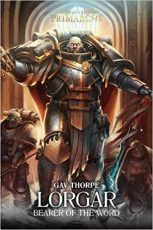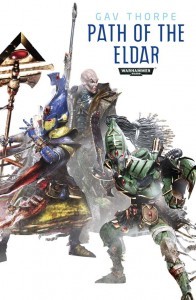Structural Engineering – Part Two
***If you haven’t read part one of my ‘Structural Engineering’ blog post, you should do so first, before reading on. Part one can be found here.***
Deconstruction
So much for the traditional approach. I’m sure you’re thinking about all those other books that didn’t do that at all, and were exceptional because of it. That’s up to you. If you think you can pull it off and it genuinely adds to the reader experience you can certainly think of other ways to break up the huge lump of text you’re about to deliver to an agent or editor.
Even within the chapter structure above, there are subdivisions of scenes to consider and macro-presentational features like dividing the volume into Books or Acts with their own section breaks and titles.
 These should serve a purpose. With Lorgar, for instance, the three book structure not only allows me to label with Bible-style headers, it highlights the three-act structure aligned to the three prominent phases of Lorgar’s life contained within the plot. It also gave me the placement of the interstitial scenes that give context to the historical narrative.
These should serve a purpose. With Lorgar, for instance, the three book structure not only allows me to label with Bible-style headers, it highlights the three-act structure aligned to the three prominent phases of Lorgar’s life contained within the plot. It also gave me the placement of the interstitial scenes that give context to the historical narrative.
Time jumps – flashbacks and the like – need to be considered structurally. Sometimes they work best as discrete chapters, as with the narratives that take place during the Fall in my Phoenix Lords novels. These are separate, thematically-linked tales rather than one story split over time. In other books the flashback scene is so directly pertinent to the ‘current’ events, like a memory surfacing, it needs to be presented in the direct flow of the prose.
Labelling and Furniture
Coming up with book titles can be a pain. Coming up with chapter titles can be a nightmare repeated forty or fifty times! For this reason alone it’s always worth considering the simple Chapter One, Chapter Two, Chapter Three approach to labelling.
If you want to add character, then there is the option of chapter titles. How you do this is entirely up to you. You might be consistent, everything with a single word for example, or you might not. I try to come up with chapter titles that hint at possibilities, intriguing the reader to continue.
Similarly, there are other devices you can use in the chapter breaks to flavour the text or provide context for the reader. A good example is the Horus Heresy series, that had three line synopses of the coming plot at the start of each chapter. In The Sundering, I did something like that in the breaks between ‘books’, setting the expectations for the coming pages.
You can append time and location onto the Chapter heading, as I did with my Empire of the Blood series, and The Beast Must Die! or you might label the narrative. Angels of Darkness is split between ‘Boreas’s Tale’ and ‘Astelan’s Tale’, denoting the two different narratives. I continued this approach with the Purging of Kadillus, each chapter headed by the ‘Tale of…’
Another example of narrative furniture comes from the Horus Heresy too – the Dramatis Personae at the start. This serves not only as a real guide to the characters involved, but also to whet the appetite of the reader, sprinkling titbits of potential plot and intrigue just with the use of a name or title.
 Quotes, extracts, thoughts and memoirs from different points of view can all be used in that narrative space between the end of one chapter and the next. But always for a good reason, to further enhance the experience of the reader, to deepen their understanding of the plot, characters or setting. The ‘Eldar Path‘ novels have a short piece of relevant eldar mythology prefacing each chapter. This gives readers some sense of the context of the Aspect Warriors and many other elements of craftworld society that I might otherwise have had to sneak in via dialogue or narrator exposition…
Quotes, extracts, thoughts and memoirs from different points of view can all be used in that narrative space between the end of one chapter and the next. But always for a good reason, to further enhance the experience of the reader, to deepen their understanding of the plot, characters or setting. The ‘Eldar Path‘ novels have a short piece of relevant eldar mythology prefacing each chapter. This gives readers some sense of the context of the Aspect Warriors and many other elements of craftworld society that I might otherwise have had to sneak in via dialogue or narrator exposition…
Prologues and Epilogues
And finally, where do Prologues and Epilogues fit into all of this? You know by now that there is no right and wrong answer. But, erring on the conservative, the chances are that the prologue and / or epilogue you have written might only be a first or last chapter. Too often I see prologues in particular that don’t serve as an separate, introductory chapter.
Ask yourself why you think the events portrayed in the prologue or epilogue are not part of the main narrative. They could be from a unique character perspective, for instance. Simple separation by time and space isn’t always a qualifier. You can also ask yourself whether the story would be comprehensive without the top and tail of the prologue or epilogue. If everything in between can make sense without them, then the chances are that it is a proper prologue or epilogue.
Epilogues shouldn’t be used to change the ending of the story. Consider The Usual Suspects. The revelation of Keyser Soze is integral to the rest of the story. It is not an afterthought. Your story should end when the final chapter finishes. An epilogue is an addendum, not a necessity. It might change the context of the ending, throw light on the event in a different manner, but it should not substantially change or undermine it.
Similarly, use a prologue to create context and expectation, but not to explain or provide exposition. It is a structural device, and in that sense quite artificial and not part of the story proper. Some good thoughts on both of these can be found here.
Like the elusive formula for the perfect sentence, paragraph or scene, there is no single solution to the question of how to best format and present your novel. Hopefully I’ve given you something to think about, and if you want to share any great examples of good or interesting structure, the comments thread is always open.
**To make sure you don’t miss out on any blog posts, you can keep up-to-date with everything Gav by signing up to my monthly newsletter. As a bonus, every other month I randomly pick a newsletter subscriber to receive a free signed copy of one of my books.**
Please Feel Free to Share:










